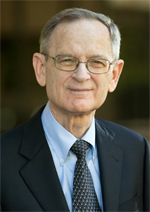Upcoming Services
| Joan Behrmann | Pending | |
| Marge Samson |
Sun May 5th at 1:30 IRA KAUFMAN CHAPEL | |
| Louise Glattstein Oram |
Sun Apr 28th at 1:30 IRA KAUFMAN CHAPEL | |
| Doralee LeVine |
Sun Apr 28th at 12:00 CHAPEL AT CLOVER HILL | |
| William Sandy |
Sun Apr 28th at 11:30 IRA KAUFMAN CHAPEL | |
| Florence Lovinger Ostrow |

FUNERAL DETAILS
Dr. Melvyn T. Korobkin
Dr. Melvyn T. Korobkin, 75, of Ann Arbor, Michigan, died on 17 March 2017. The Funeral was held at Temple Beth Emeth, 2309 Packard St, Ann Arbor, MI 48104 on Tuesday, 21 March 2017 at 11:00 AM . Rabbi Robert Levy officiated. Interment at Arborcrest Memorial Park, 2521 Glazier Way, Ann Arbor MI 48105.
The family of Dr. Melvyn T. Korobkin will be gathering through the evening of Wednesday, March 22 at the residence, 1376 Wolverhampton Lane, Ann Arbor Mi 48105. The phone number is 734-995-5172. FRIENDS ARE WELCOME IMMEDIATELY AFTER THE BURIAL AT ARBORCREST CEMETERY. FRIENDS ARE WELCOME TUESDAY AND WEDNESDAY EVENINGS FROM 5:00 P.M. UNTIL 8:00 P.M. Family members include: Beloved husband of 38 years of Linda Korobkin; Cherished father of Daniel Korobkin; Survived by his Identical Twin Brother, Alvin (Marsha) Korobkin; Uncle of Russell (Sarah) Korobkin and their daughter, Jessica Korobkin. Upon graduating from the Yale School of Medicine in 1967, Dr. Korobkin went to UC-San Francisco for radiology residency and in 1972 joined their faculty. The following year, UCSF became one of the first medical centers in the nation to install a body CT scanner, and Dr. Korobkin was heading up this revolutionary new area of radiology. Thus began a 40-year-long career dedicated to exploring and demonstrating the possibilities of CT in diagnosing abdominal disease. Excitement and enthusiasm marked these early days, and they come to life again when Dr. Korobkin recounts his wonder at being able to visualize the adrenal glands for the very first time or describes the intellectual energy this new technology inspired. Collaborating with other radiologists, he and his team developed many of the first protocols for body CT imaging. He was one of the founding members of the Society of Uroradiology in 1974 and the Society of Computed Body Tomography in 1976. Through these societies, Dr. Korobkin helped bring together academic radiologists from around the country who were committed to uroradiology and CT to promote and share research, mentor nascent academic radiologists, and offer postgraduate courses to both community and academic radiologists. Dr. Korobkin was by now one of the foremost authorities in abdominal radiology. He then spent six years as Head of Body CT at Duke University and another five years in practice at Sinai Hospital of Detroit/Wayne State Medical School. In 1989, he joined U-M's Department of Radiology as director of the Abdominal Division, and made it his home for the next 23 years. In an atmosphere he describes as friendly and highly stimulating-the right fit for his commitment to research, teaching, and collaboration-he went on to do some of his most important work. Radiology Chair Dr. N. Reed Dunnick sums up Dr. Korobkin's most significant breakthrough: "Recognizing the frequency with which adrenal nodules are found on abdominal CT scans, Dr. Korobkin focused his research on finding a way to non-invasively distinguish the most common etiology, a benign adenoma, from more ominous lesions. The technique he and his colleagues developed has become the standard of care for evaluating these nodules." Dr. Korobkin and his team were able to show that those adrenal lesions that were of sufficiently low density on noncontrast CT scans were benign. Further observing that CT contrast medium washes out of adrenal masses at different rates, Dr. Korobkin and his colleagues investigated this difference over several years to develop a quantitative method that accurately and consistently distinguishes higher density benign from malignant adrenal masses. The benefit to patients is considerable: Prior to this new method, patients required either a needle biopsy or a series of CT scans over several months. Now, patients with benign adrenal masses are spared an invasive biopsy and its inherent risks and the radiation exposure from follow-up scans. These are but some of Dr. Korobkin's contributions to radiology, medicine and scholarship, and in 2008 the Society of Abdominal Radiology honored him with their first Lifetime Achievement Award. It is suggested that those who wish to further honor the memory of Dr. Melvyn T. Korobkin may do so by making a contribution to: Arbor Hospice FoundationClick to Visit Charity Website or Gesher Human ServicesClick to Visit Charity Website |
